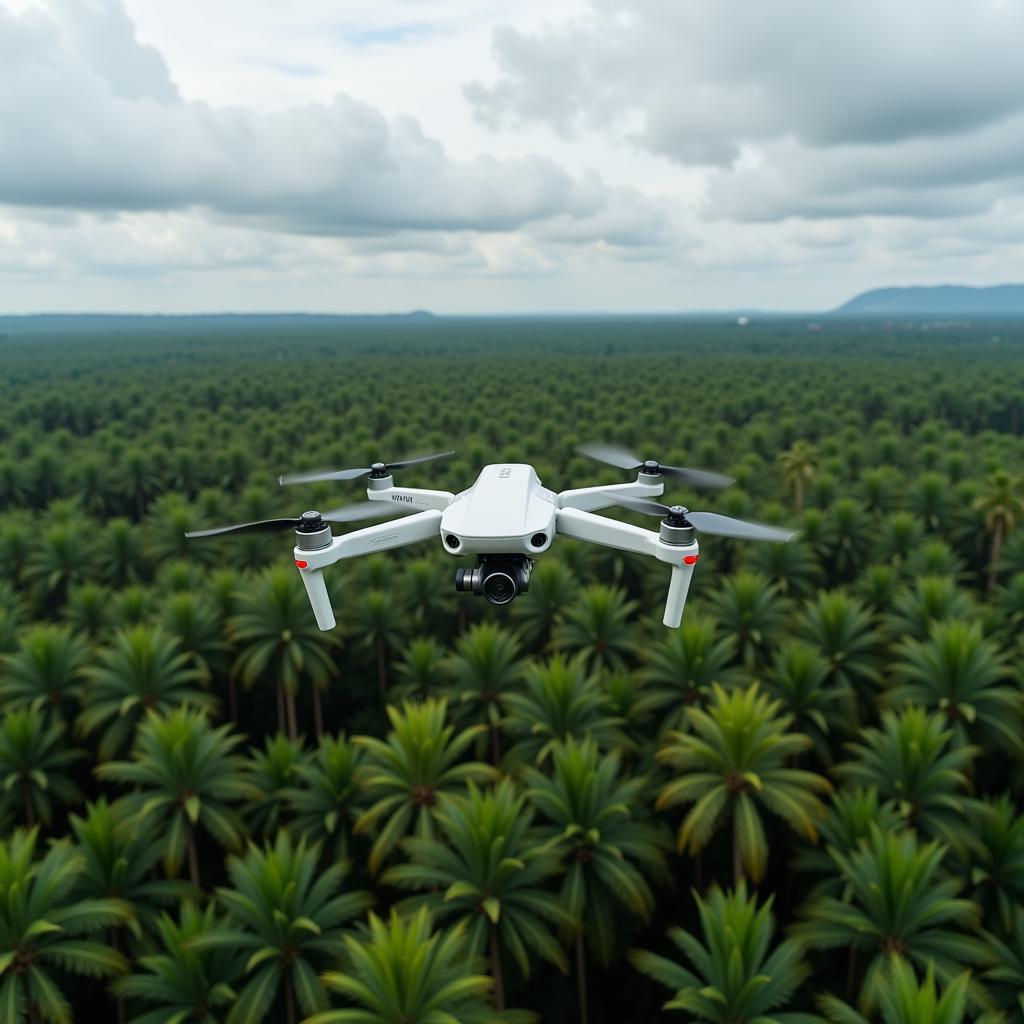Asean Agriculture plays a vital role in the region’s economy, livelihoods, and food security. From rice paddies in Vietnam to palm oil plantations in Malaysia, the diverse agricultural landscape of Southeast Asia feeds millions and contributes significantly to global food production. This article delves into the complexities and opportunities within ASEAN agriculture, examining its challenges, innovations, and potential for future growth.
The State of ASEAN Agriculture: A Diverse Landscape
ASEAN agriculture is characterized by its incredible diversity. The region produces a wide range of crops, from staple foods like rice and corn to high-value commodities like coffee, rubber, and palm oil. This diversity is a strength, allowing ASEAN countries to cater to various global markets and adapt to changing consumer demands. However, this diversity also presents unique challenges. Varying climates, soil conditions, and farming practices across the region require tailored solutions for sustainable agricultural development.
Smallholder farmers are the backbone of ASEAN agriculture. These farmers, often working on small plots of land, face numerous challenges, including limited access to finance, technology, and market information. Empowering these farmers through access to resources and training is crucial for improving productivity and ensuring sustainable livelihoods.
Challenges and Opportunities in ASEAN Agriculture
ASEAN agriculture faces a myriad of challenges, including climate change, resource depletion, and increasing demand for food. Climate change poses a significant threat to agricultural productivity, with erratic weather patterns and rising temperatures impacting crop yields. Sustainable water management and climate-resilient farming practices are essential for mitigating these risks.
The growing population in Southeast Asia and increasing global demand for food create immense pressure on the agricultural sector. Innovative solutions are needed to boost productivity while minimizing environmental impact. Precision agriculture, biotechnology, and improved crop varieties offer promising pathways to enhance food security and sustainable development.
One significant opportunity lies in regional cooperation. By sharing best practices, investing in research and development, and promoting cross-border trade, ASEAN countries can strengthen their agricultural sectors and enhance regional food security. Initiatives like the ASEAN Agriculture Summit Oct 4 2017 provide platforms for dialogue and collaboration towards a more resilient and prosperous agricultural future.
What is the role of technology in ASEAN agriculture?
Technology plays an increasingly important role in modernizing ASEAN agriculture. From precision farming techniques using GPS and drones to mobile applications providing real-time market information, technology is empowering farmers and boosting productivity.
How can ASEAN countries improve food security?
Improving food security requires a multi-faceted approach, including investing in agricultural research and development, promoting sustainable farming practices, and strengthening regional cooperation. The ASEAN Agriculture Summit 2017 addressed these key issues.
The Future of ASEAN Agriculture: Innovation and Sustainability
The future of ASEAN agriculture lies in embracing innovation and sustainability. By investing in research and development, promoting sustainable farming practices, and empowering smallholder farmers, ASEAN countries can unlock the full potential of their agricultural sectors. This includes supporting initiatives like the ASE Feed Mill to improve livestock production. Policies that encourage sustainable land management, promote climate-resilient agriculture, and facilitate access to markets are vital for ensuring long-term food security and economic growth.
 Technological Advancements in ASEAN Agriculture: Drones and Precision Farming
Technological Advancements in ASEAN Agriculture: Drones and Precision Farming
“The future of food security in ASEAN relies on our ability to innovate and adapt,” says Dr. Anya Sharma, a leading agricultural economist specializing in Southeast Asia. “By embracing technology and sustainable practices, we can ensure a prosperous future for our farmers and our region.” Another expert, Mr. Budi Santoso, an Indonesian farmer and advocate for sustainable agriculture, adds, “We must empower our smallholder farmers with the knowledge and resources they need to thrive in a changing climate.” These perspectives highlight the crucial need for a balanced and forward-thinking approach to ASEAN agriculture.
The ASEAN Agriculture Summit 2017 Summary emphasizes the importance of regional collaboration. Furthermore, discussions surrounding ASEAN Agriculture Visa programs can facilitate the exchange of knowledge and expertise within the region.
In conclusion, ASEAN agriculture is a vital sector with immense potential. By addressing the challenges and embracing opportunities, the region can cultivate a future of sustainable growth and food security. Investing in innovation, empowering smallholder farmers, and promoting regional cooperation are crucial for realizing this vision.
FAQ
- What are the main agricultural products of ASEAN?
- How does climate change impact ASEAN agriculture?
- What is the role of smallholder farmers in ASEAN agriculture?
- How can technology improve agricultural productivity in ASEAN?
- What are the key challenges to food security in ASEAN?
Need support? Contact us 24/7: Phone: 0369020373, Email: [email protected], or visit us at: Thôn Ngọc Liễn, Hiệp Hòa, Bắc Giang, Việt Nam.

